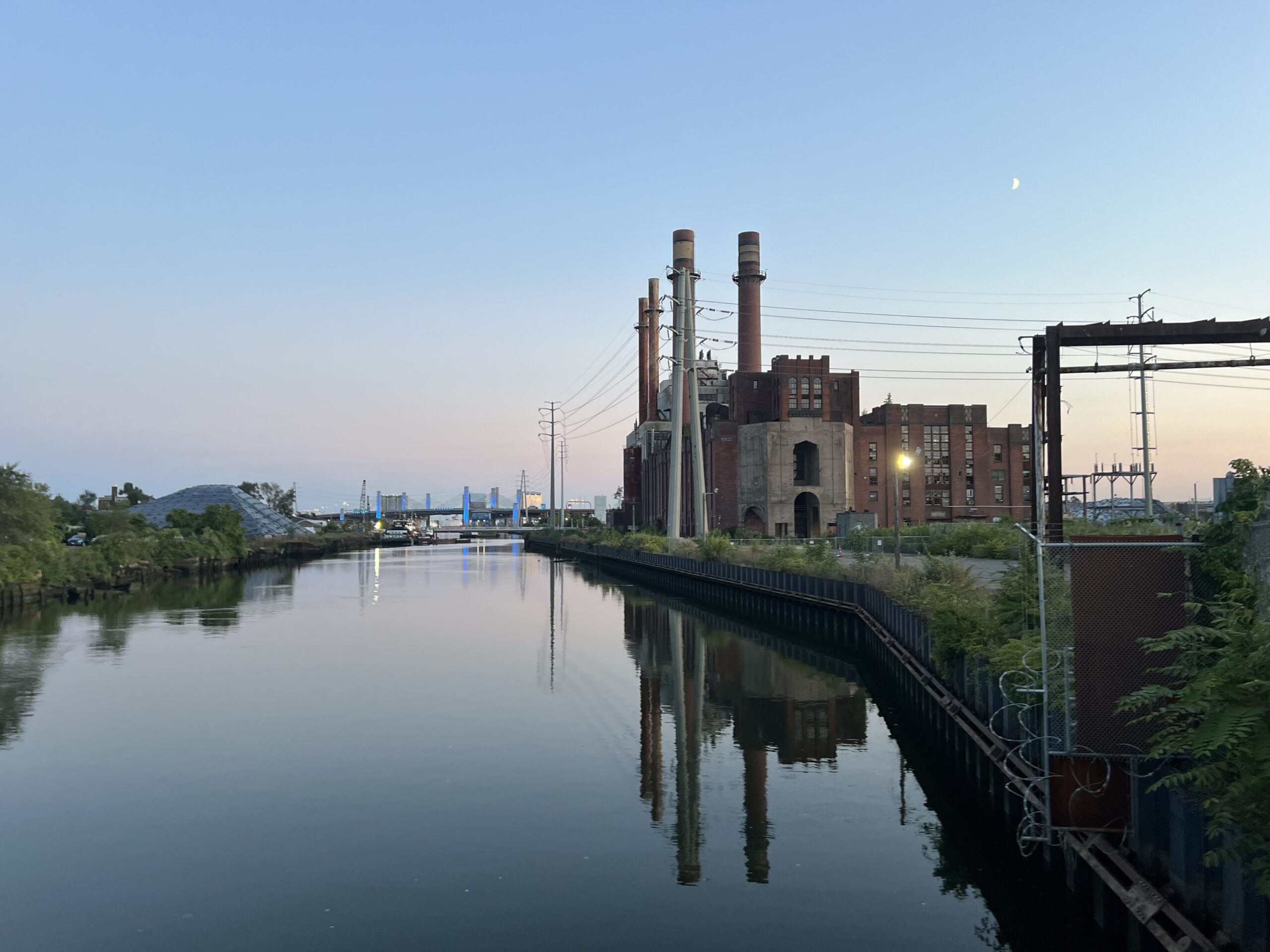City officials hope for housing around park pitched to replace abandoned plant
As New Haven plans to turn the English Station site into a public park, economic development officials said the project could unlock new housing and development in Mill River.

Lily Belle Poling, Staff Photographer
New Haven officials hope a planned redevelopment of the abandoned English Station power plant could spur new housing construction in the surrounding area.
Mayor Justin Elicker announced in July that the city plans to convert the former industrial plant into a new public space called Mill River Park. The proposed project would feature walking and biking trails, outdoor pools and playgrounds, according to a news release from the mayor’s office.
Economic Development Administrator Michael Piscitelli said the park would serve as a cornerstone for a new residential neighborhood east of Interstate 91. In a joint interview Tuesday at City Hall, Piscitelli and two members of his staff said ongoing cleanups of abandoned and undeveloped properties adjacent to the former power plant were critical steps toward opening the land for further development.
“Our economic development strategy is built on strong job sectors and rebuilding a public infrastructure that supports a healthy community,” Piscitelli said. “Rebuilding English Station as a public park is the anchor for what we see as a new neighborhood in the Mill River district.”
English Station, vacant since 1992, is one of New Haven’s most visible environmental scars — a contaminated power plant on Ball Island that has languished in legal disputes for decades.
Fair Haven, the largely low-income and Latino residential neighborhood just east of the site, has experienced persistent environmental issues, with residents facing flooding risks and industrial pollution at higher levels than elsewhere in the city.
The facility, now owned by O&G Industries, has faced reduced federal oversight in the past year. State officials are pushing to hold the former owner United Illuminating accountable for cleanup.
English Station remains contaminated with toxic chemicals and heavy metals. A Connecticut Superior Court ruling in March upheld a $2 million annual penalty against United Illuminating for failing to remediate the site.
Piscitelli and the members of his staff estimate that once cleanup is underway, the planned Mill River Park could be built in 18 to 24 months. They said residents who attended community and legislative meetings have raised concerns about affordability and the retail options that new developments would support.
Piscitelli said the city is also negotiating with private owners of nearby industrial parcels and contaminated sites.
He said officials are eyeing redevelopment projects at a former petroleum tank farm on River Street and at the site of a former clock factory in Wooster Square.
“These will be the first two out of the gate,” Piscitelli said, referring to housing developments in the area. “Then you’ll see more as we can open up additional properties for redevelopment.”
The city’s goal, Piscitelli said, is to expand housing supply in Mill River to reduce pressure on other neighborhoods. Without opening new residential districts, he warned, rising demand could encourage developers to tear down existing low-density housing in other parts of the city to build denser housing.
Mill River has long been seen as “the edge” of several neighborhoods — downtown, Fair Haven and Wooster Square — but redevelopment could reposition it as a new center connecting them, Piscitelli said.
But housing development there will take years, as builders seek to secure financing through state agencies, federal programs and private lenders. Piscitelli said four years would be considered a fast turnaround for housing.
Carlos Eyzaguirre, one of Piscitelli’s deputies, stressed the importance of supporting smaller-scale projects in addition to large developments. City officials are particularly interested in housing projects under 30 units.
“We want a market in New Haven where smaller developers — people from Connecticut and the neighborhood — actually get a chance to play a role,” Eyzaguirre said. “Those projects can help build a sense of belonging, even if they are harder to fund.”
Malachi Bridges, another official in the economic development administration, said housing construction must be paired with public amenities that improve the quality of life in neighborhoods long dominated by industrial uses.
“We are trying to see ways that we can reconnect communities beyond highway and infrastructure,” Bridges said.
Bridges, who grew up in New Haven, recalled learning to swim at Wilbur Cross High School through the city’s Police Athletic League program, an experience that he said shaped how he views the importance of public amenities.
For him, features like an outdoor pool go hand in hand with building new housing and attracting more families to the city.
English Station is located on the Mill River at 275 Wolcott St.
Interested in getting more news about New Haven? Join our newsletter!







